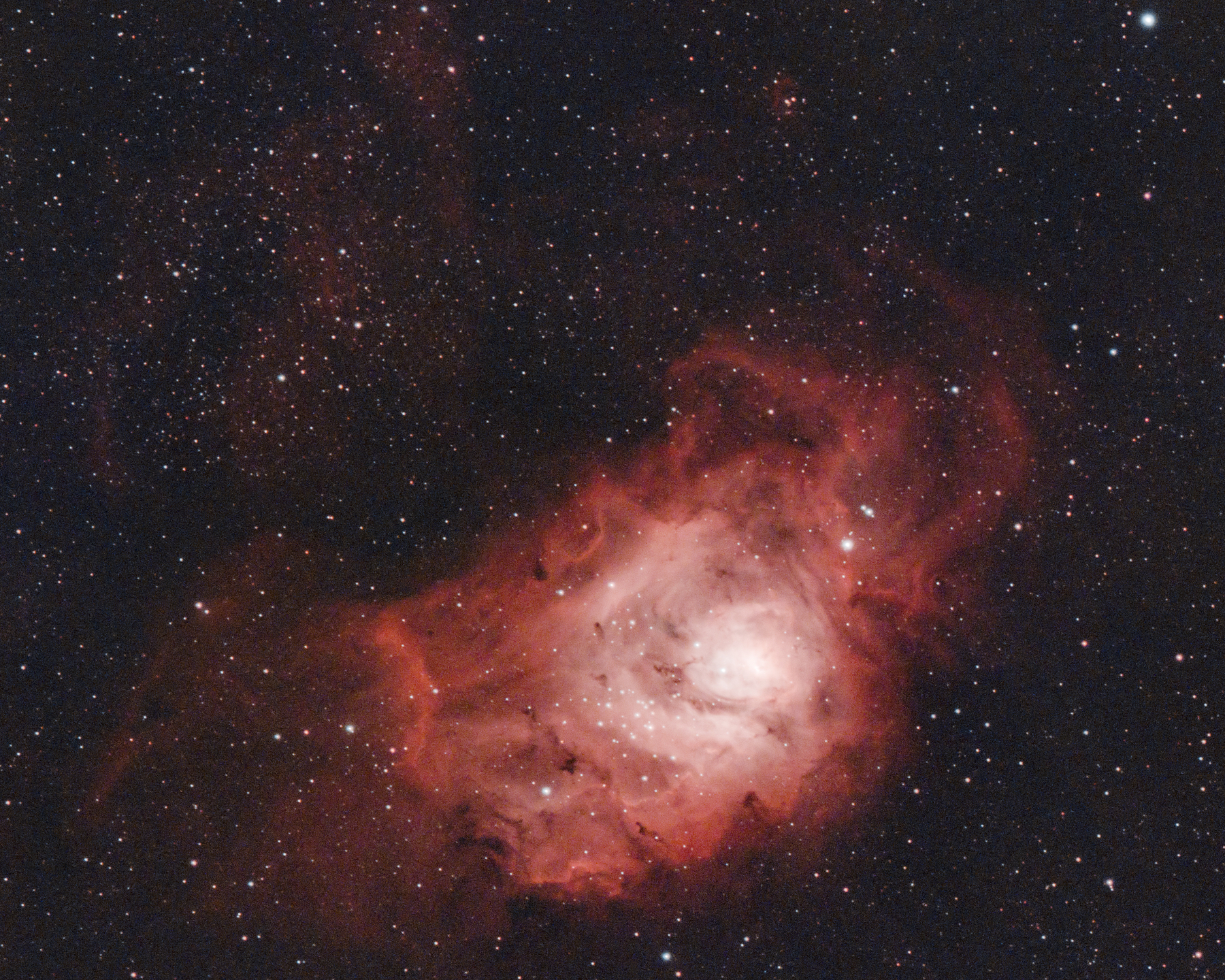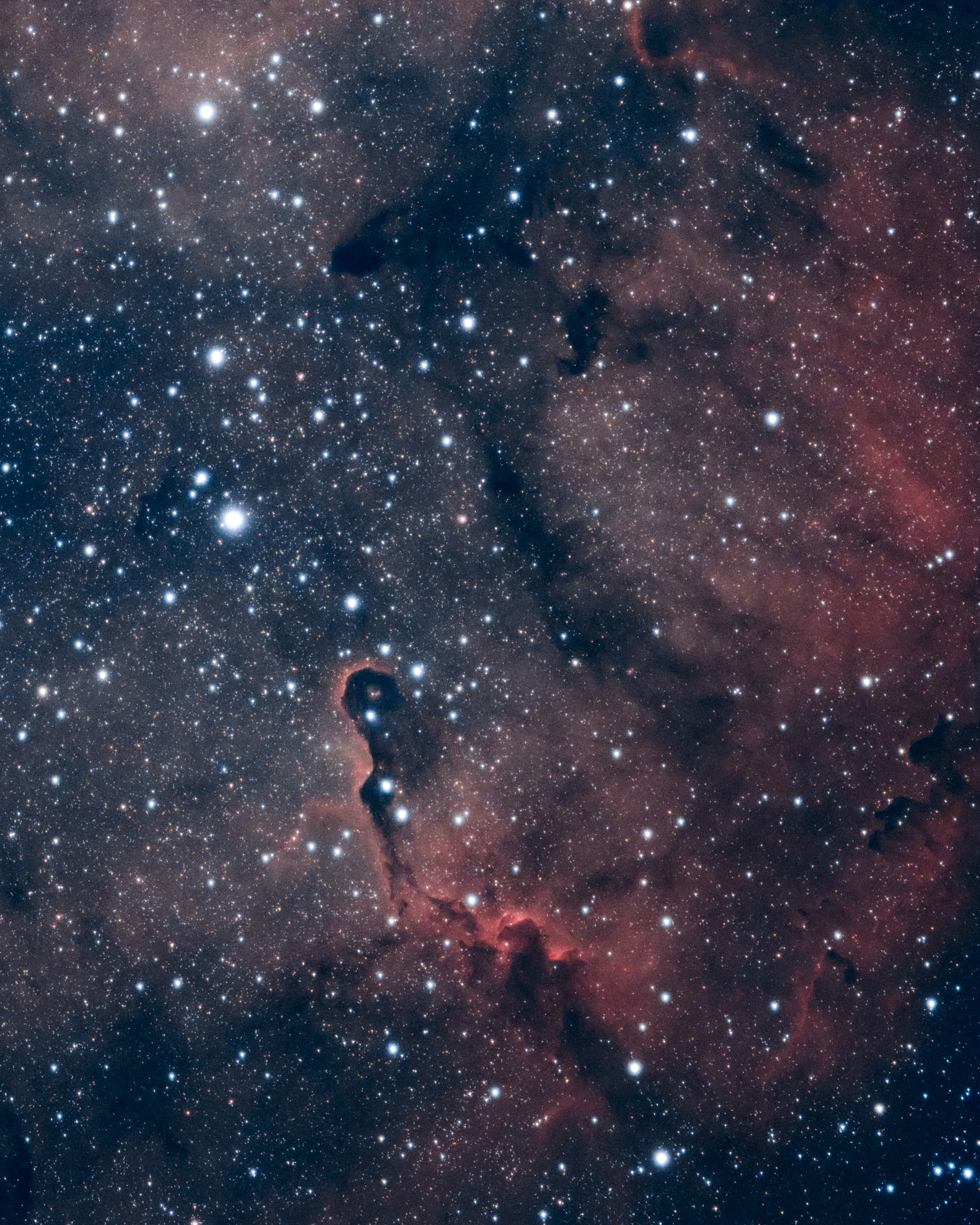Astrophotos
Eagle nebula - Oct2022

Eagle nebula aka Star Queen nebula (M16) in constellation Serpens, at about 7000 light years is home to the "Pillars of Creation" made famous by Hubble telescope. I always wanted to capture this but, my Southern sky is not completely open. I only get about one hour window for capturing these objects closer to the Southern horizon.
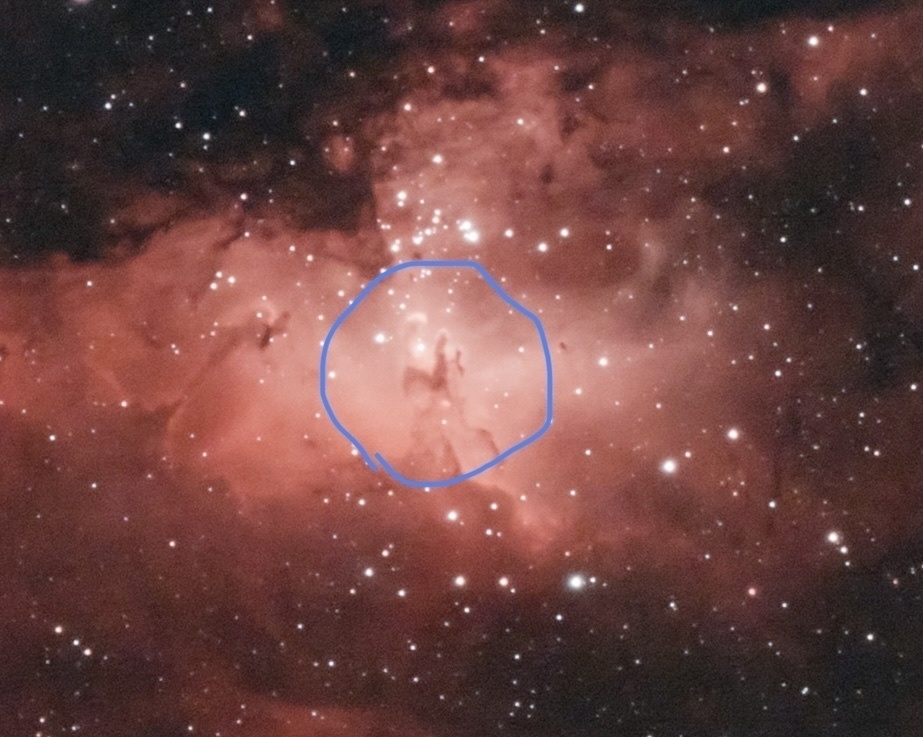
It was very satisfying to see that the "Pillars of Creation" were clearly visible in my image. The James Webb Telescope released its latest image of the pillars in midrange infrared light and it is just mind-blowing (see below). One can compare and quite obviously see the difference between a thousand dollar imaging setup and a billion dollar one. 😄
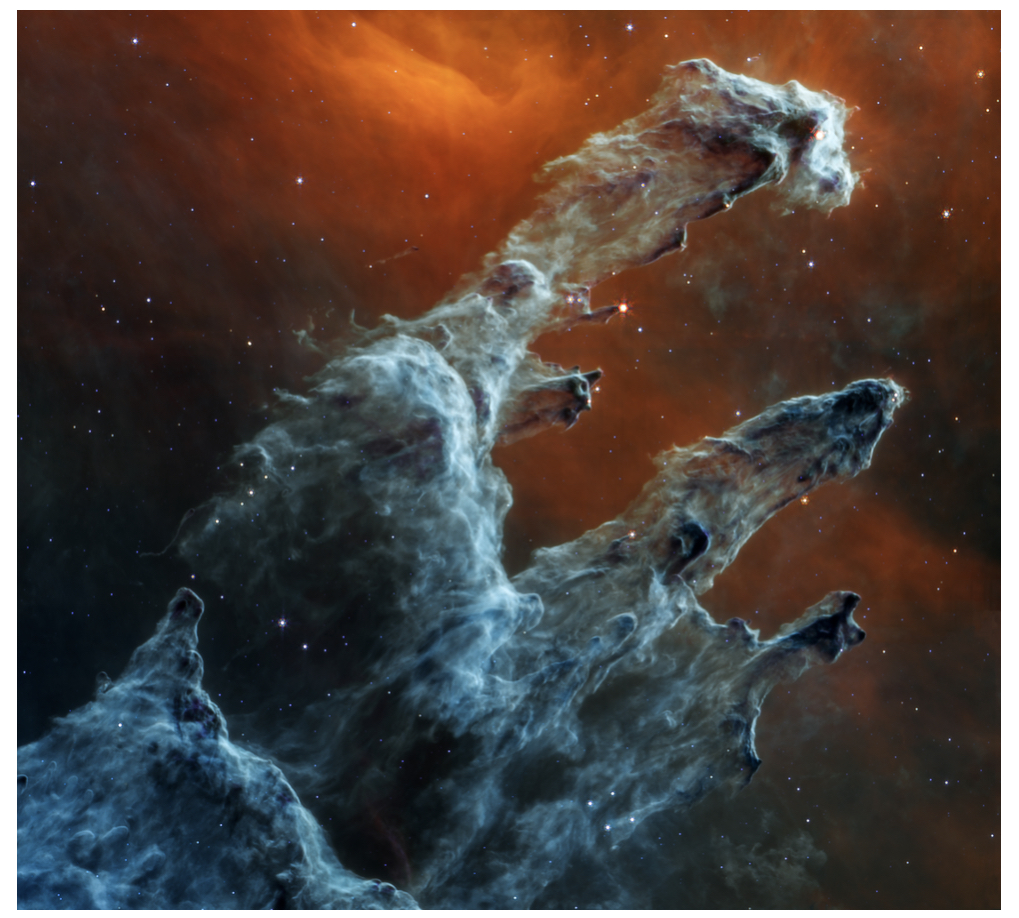
Telescope: WO ZS61
Camera: ASI533MC-Pro
Filter: Optolong L-eXtreme
Exposure: 50x1min
Processing: SIRIL and PS
Elephant trunk nebula - Oct 2022
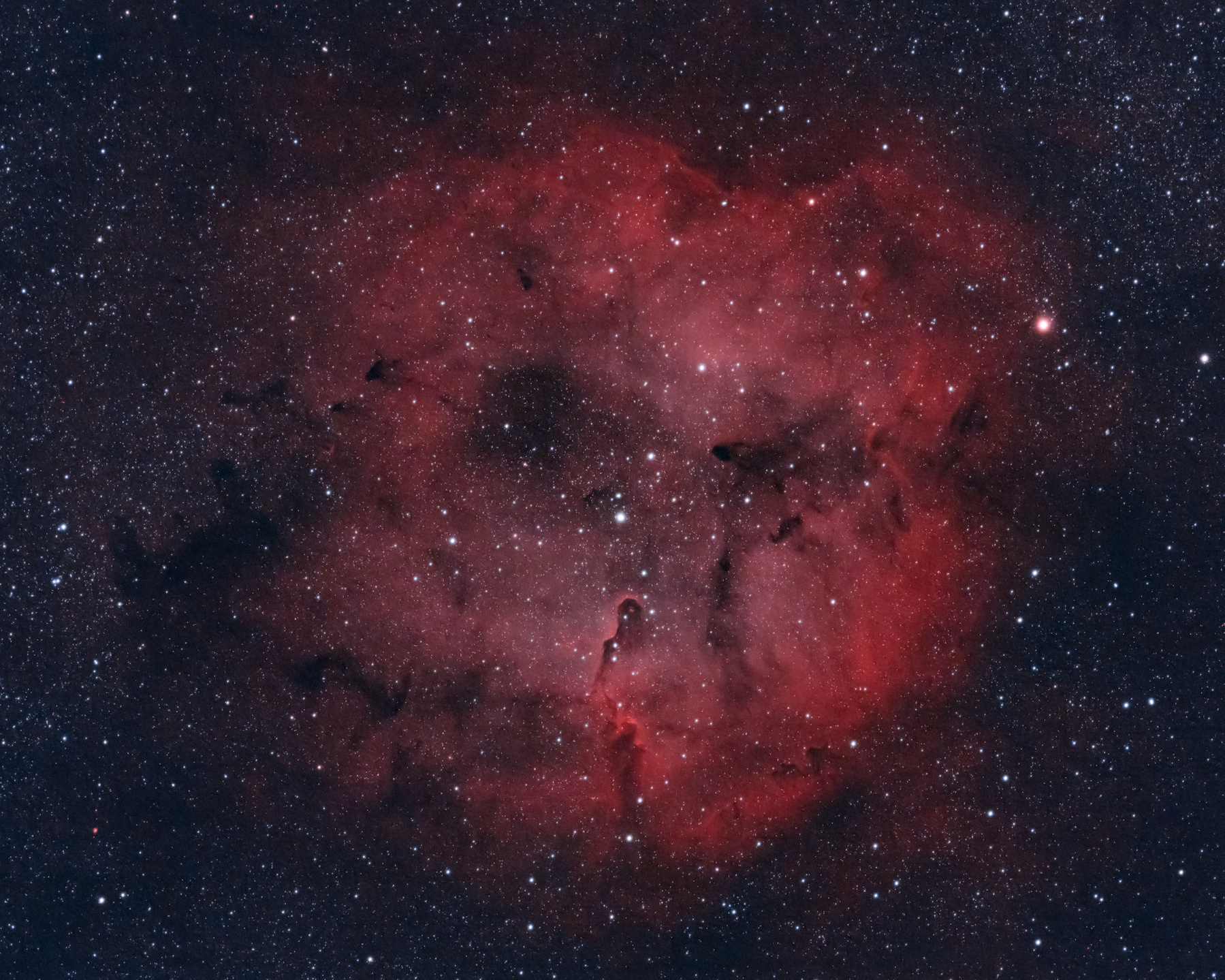
Another attempt at capturing Elephant trunk nebula (IC1396) in Cepheus. This large cloud of gas and dust is a star forming region with many 'young' (~100,000 years old) stars. Use of Nikon Z6 camera with the full frame sensor instead of the cropped sensor ASI533MC-pro astro camera, makes it a wider angle image. For comparison, here is a photo of the same object taken with the ASI camera two months ago.
WO ZS61 - Nikon Z6 - L-eXtreme - 47x5min - SIRIL - PS
Soul nebula
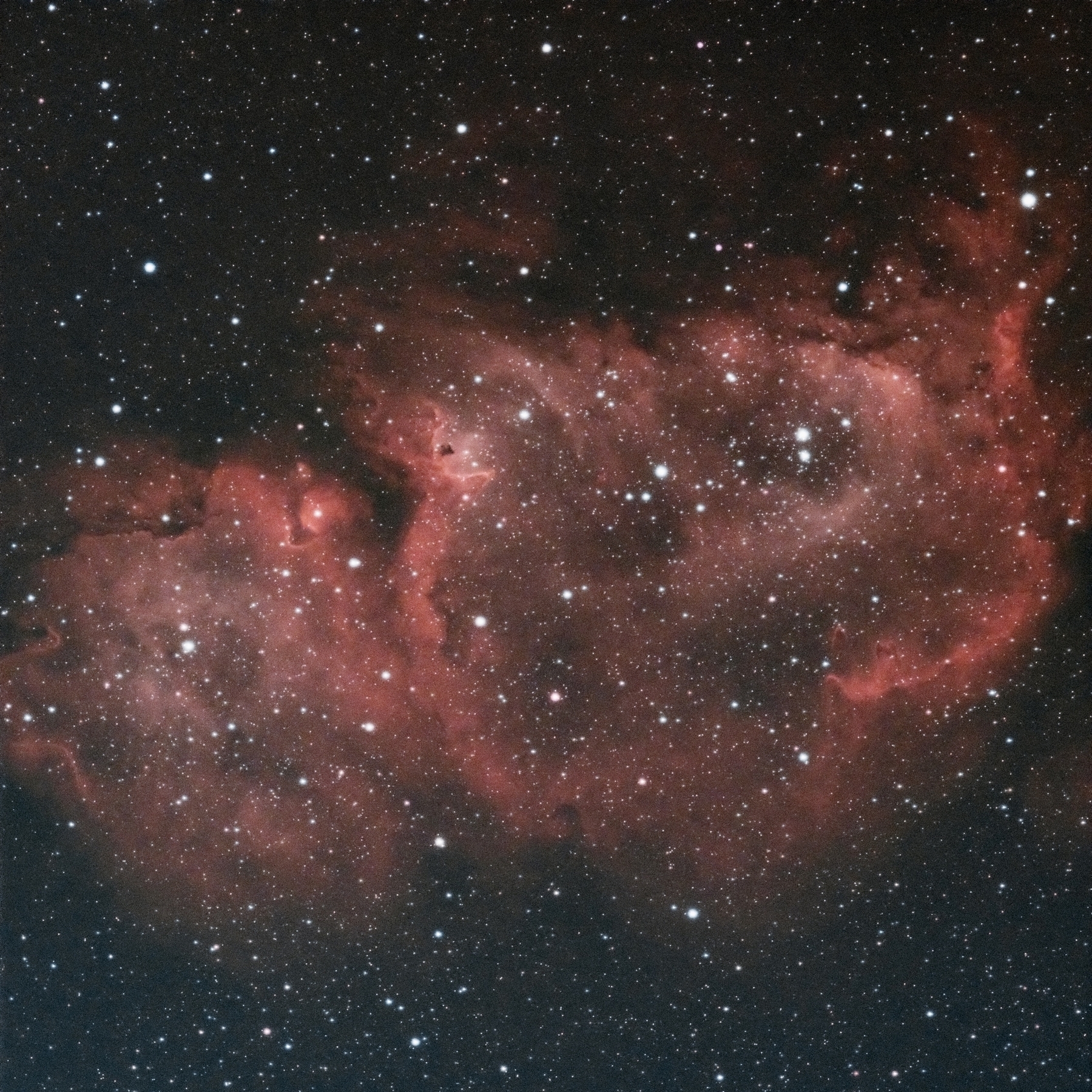
Soul nebula in Cassiopeia at about 6500 light years from us. This large emission nebula is often photographed with its neighbor - Heart nebula.
WO ZS61 : ASI533MC-pro : L-eXtreme : 47x3min : SIRIL : PS
Andromeda galaxy - Sep2022

My best Andromeda galaxy image so far. It is only 30 minutes of total exposure but autoguiding makes a huge difference by making all the details clear and sharp. Have to collect more data on the next clear night.
The Andromeda Galaxy, also known as Messier 31 (M31) is a barred spiral galaxy approximately 2.5 million light-years from Earth and the nearest major galaxy to the Milky Way. It is larger than Milky Way galaxy by about 25-50%. Two other galaxies are in this view - M32 (above M31) which is a satellite galaxy of M31 and M110 (bottom of frame) which is also part of the Andromeda group of galaxies.
Telescope: William Optics Zenithstar 61; focal length 360mm
Optolong UV/IR cut filter
Camera: ZWO ASI533MC-pro, cooled to -10C
1 minute exposures with auto guiding; total exposure of 30 minutes;
used dark, flat, bias calibration frames
Processed in SIRIL and PhotoShop
Pelican nebula - Sep2022
Pelican nebula (IC 5070) is located in Cygnus constellation, right next to the North American nebula. This emission nebula is about 1800 light years away and is 30 light years across. In this image I was struck by the incredible detail that can be seen in the silhouetted dark dust regions.
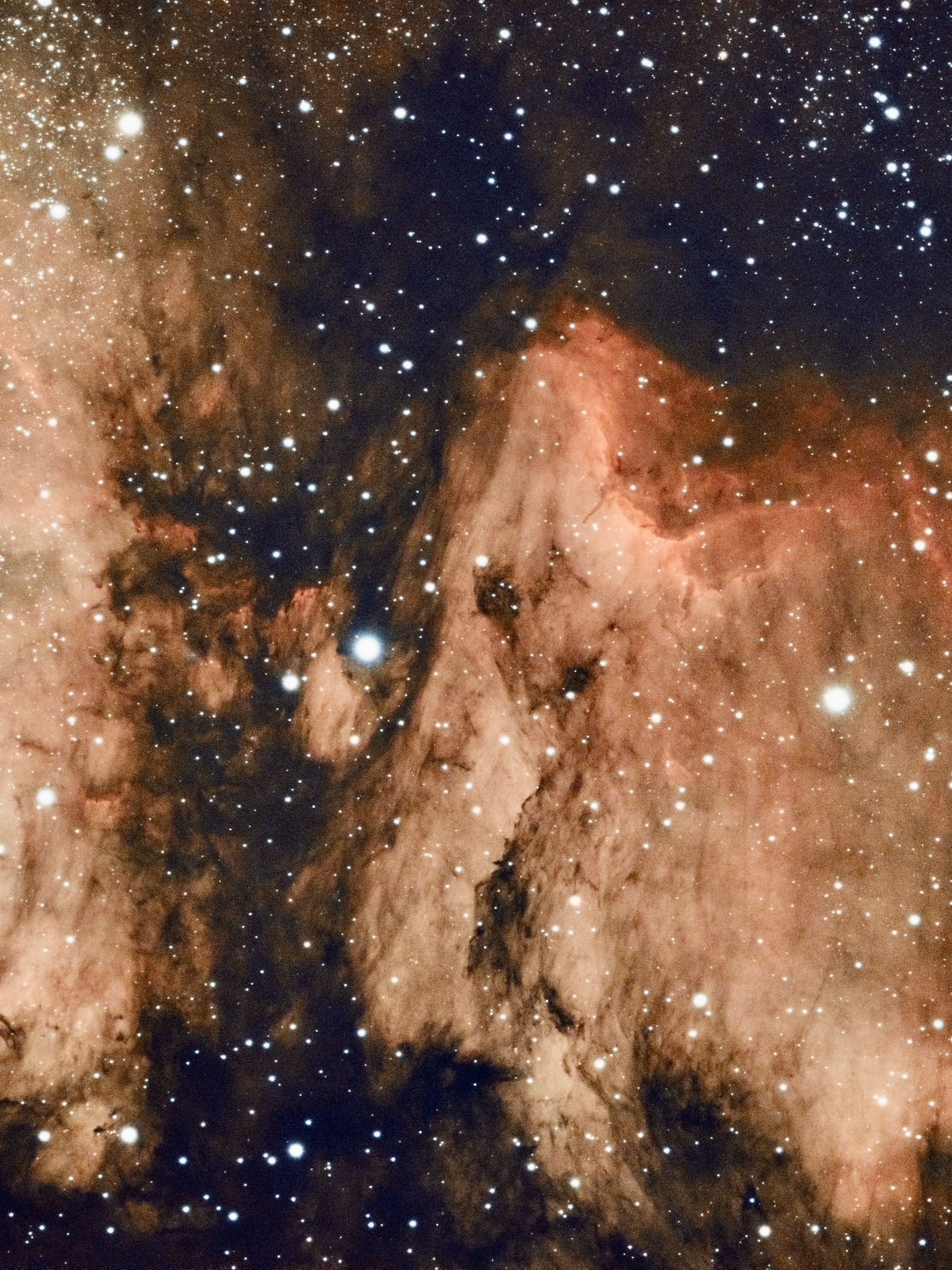
Really happy with how well the current setup is working. For auto guiding, the RMS error is consistently less than 1 arc second. This makes nice round pin-point stars even with 5 minute long exposures. The narrowband L-eXtreme filter performs very well with light suppression.
Telescope: William Optics Zenithstar 61; focal length 360mm
Optolong L-eXtreme narrowband filter
Camera: ZWO ASI533MC-pro, cooled to -10C
5 minute exposures with auto guiding; total exposure of 3 hours;
used dark, flat, bias calibration frames
Processed in SIRIL and PhotoShop
Perseid meteor showers - Aug 2022
On the night of Aug 13th, set up my camera to capture Perseid meteor showers. Over 5 hours, caught 3 meteors and about 2 hours of continuous cloudless sky to make a startrails image.
Nikon Z6; Tokina 11-16mm f/2.8; 60 sec
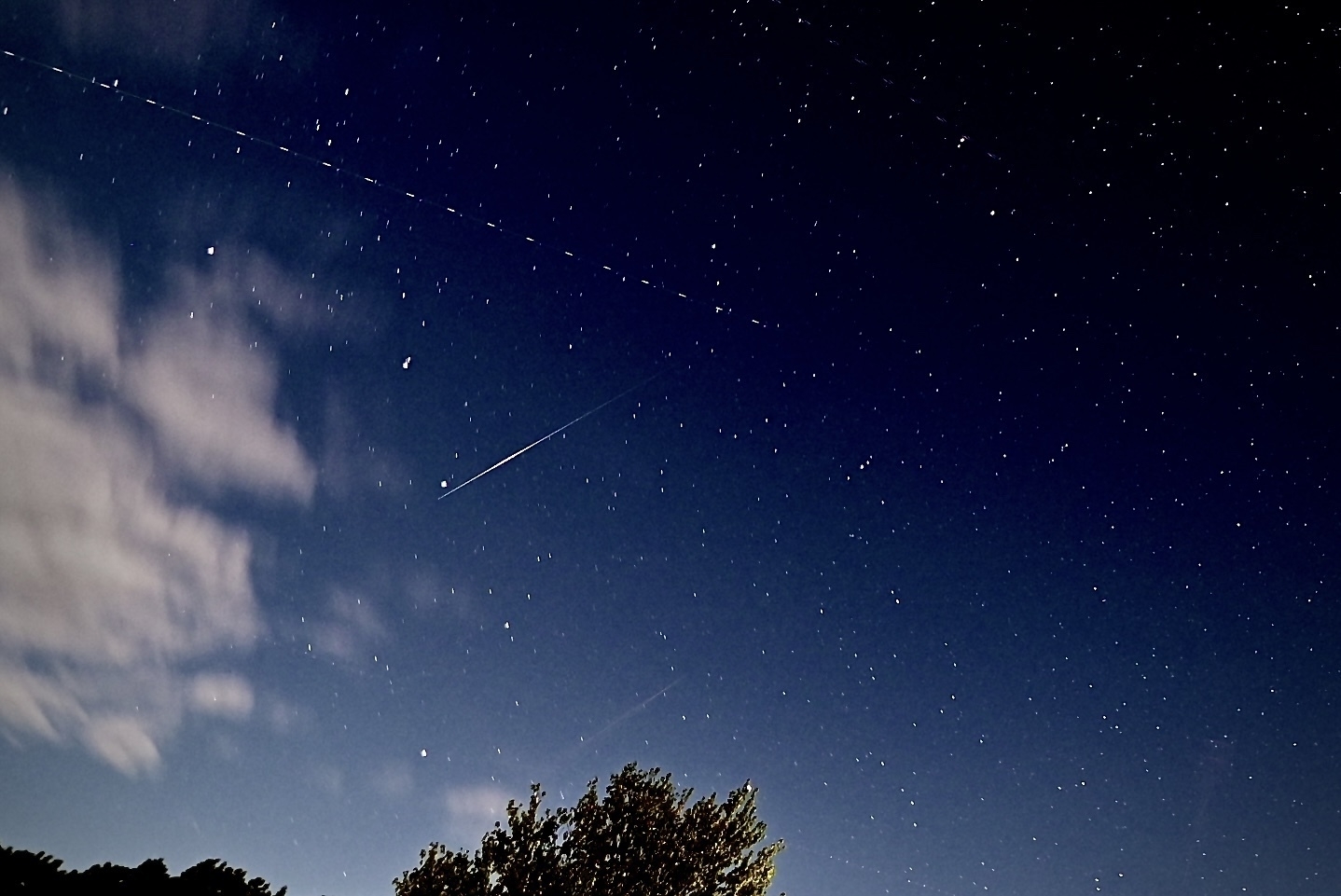
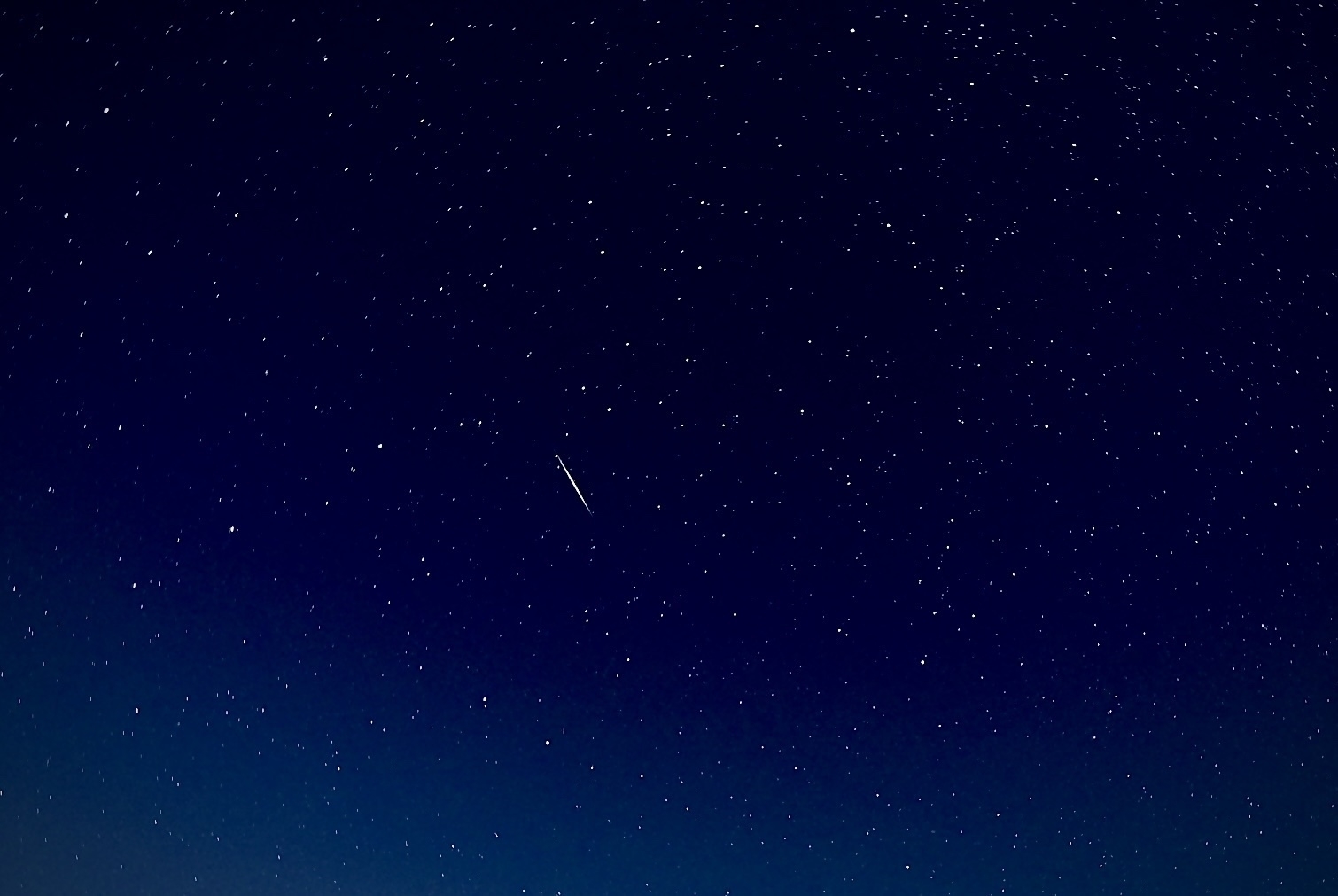
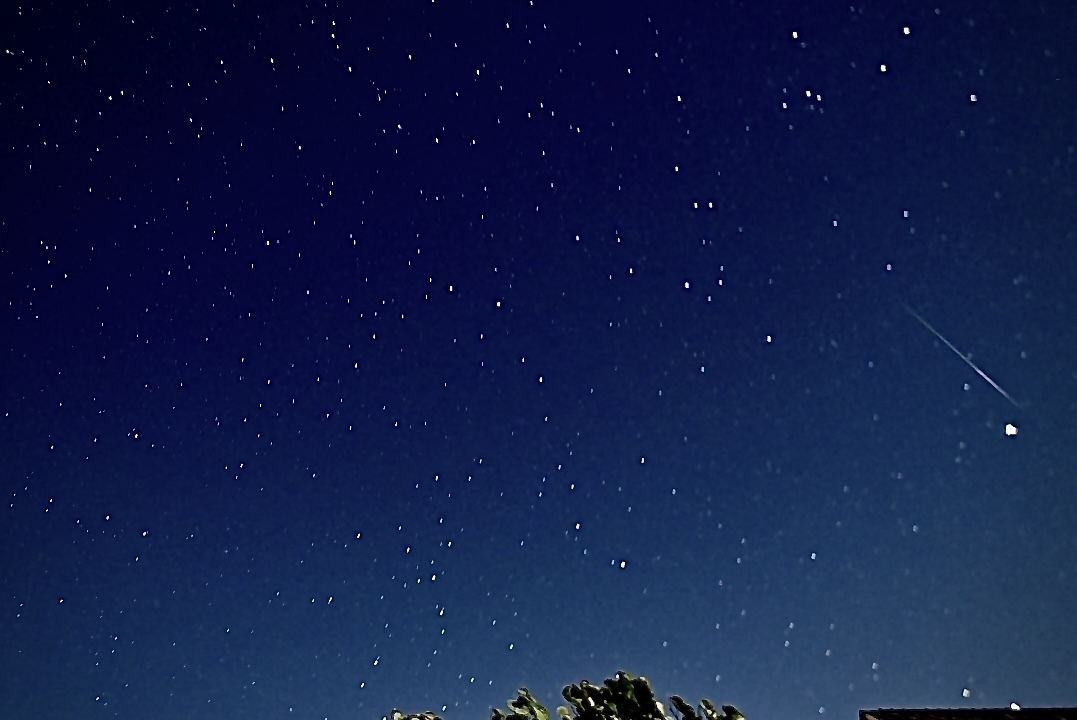
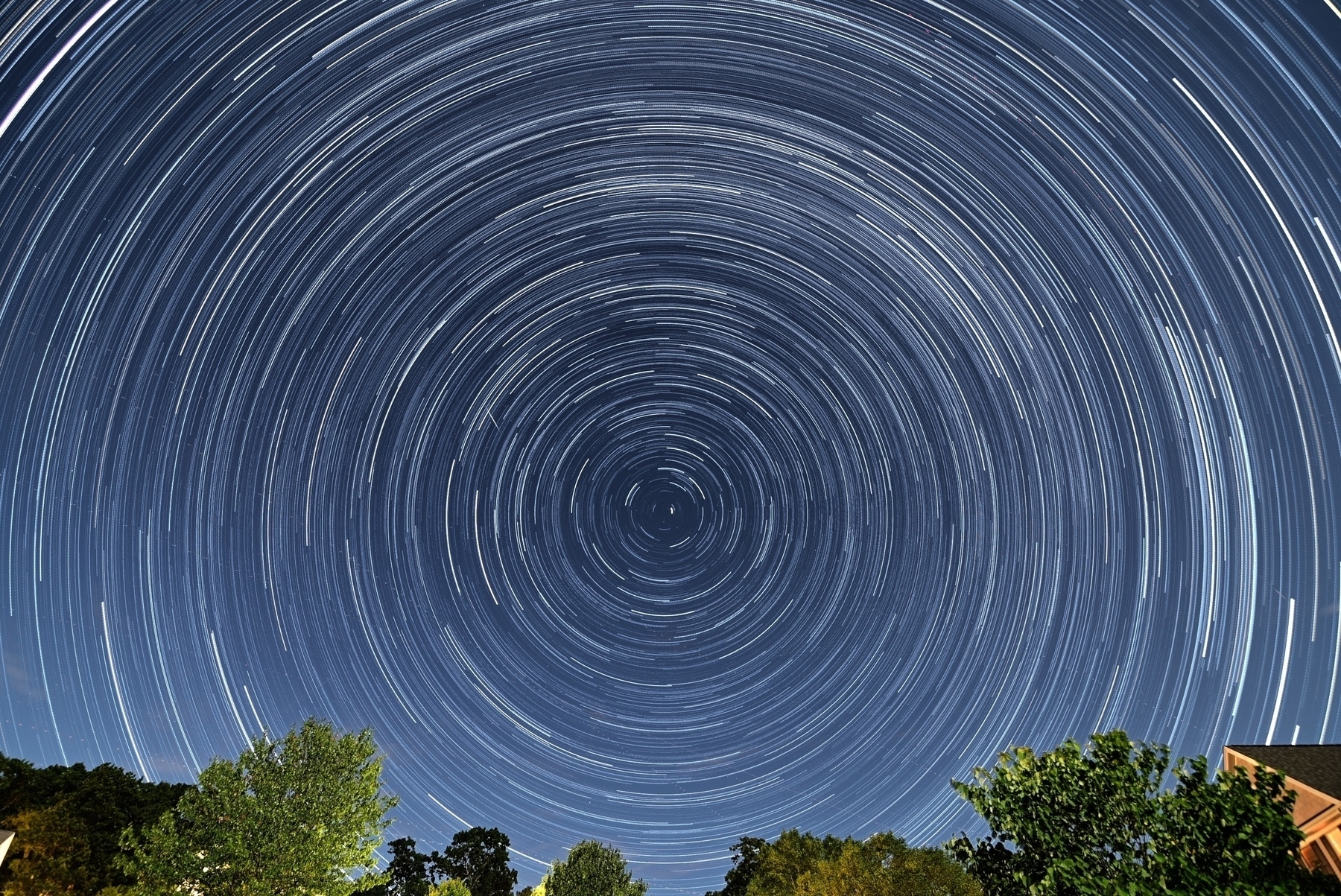
Cygnus wall

Cygnus wall is a part of the North American nebula (NGC7000) with the most concentrated star formation. The dark area on the right is interstellar dust that is obscuring our view of this whole emission nebula. I think this is my best effort so far at capturing this nebula.
This image was taken with ZWO ASI533MC-PRO camera attached to William Optics ZenthiStar 61 refracting telescope with Optolong LeNhance dual band filter. This is a stack of 30 five minute subs processed with SIRIL and PhotoShop. This image is cropped from the original. Another uncropped image of the same field of view can be seen here.
Camera and image framing
Now with some experience with 2 different cameras on the same telescope, I can see how these different setups have different field of view and it can affect the framing of images. The cameras in this comparison are Nikon Z6, a full frame DSLR with 6048x2024 pixels and ZWO ASI533MC-PRO, a dedicated astrophotography camera with a cropped sensor with a resolution of 3008x3008 pixels. The same target was imaged using same telescope, William Optics ZenithStar 61, attached to these cameras and the difference in field of view is huge as seen here. They are processed differently at different times, hence the overall image quality should not be compared here, just the field of view.
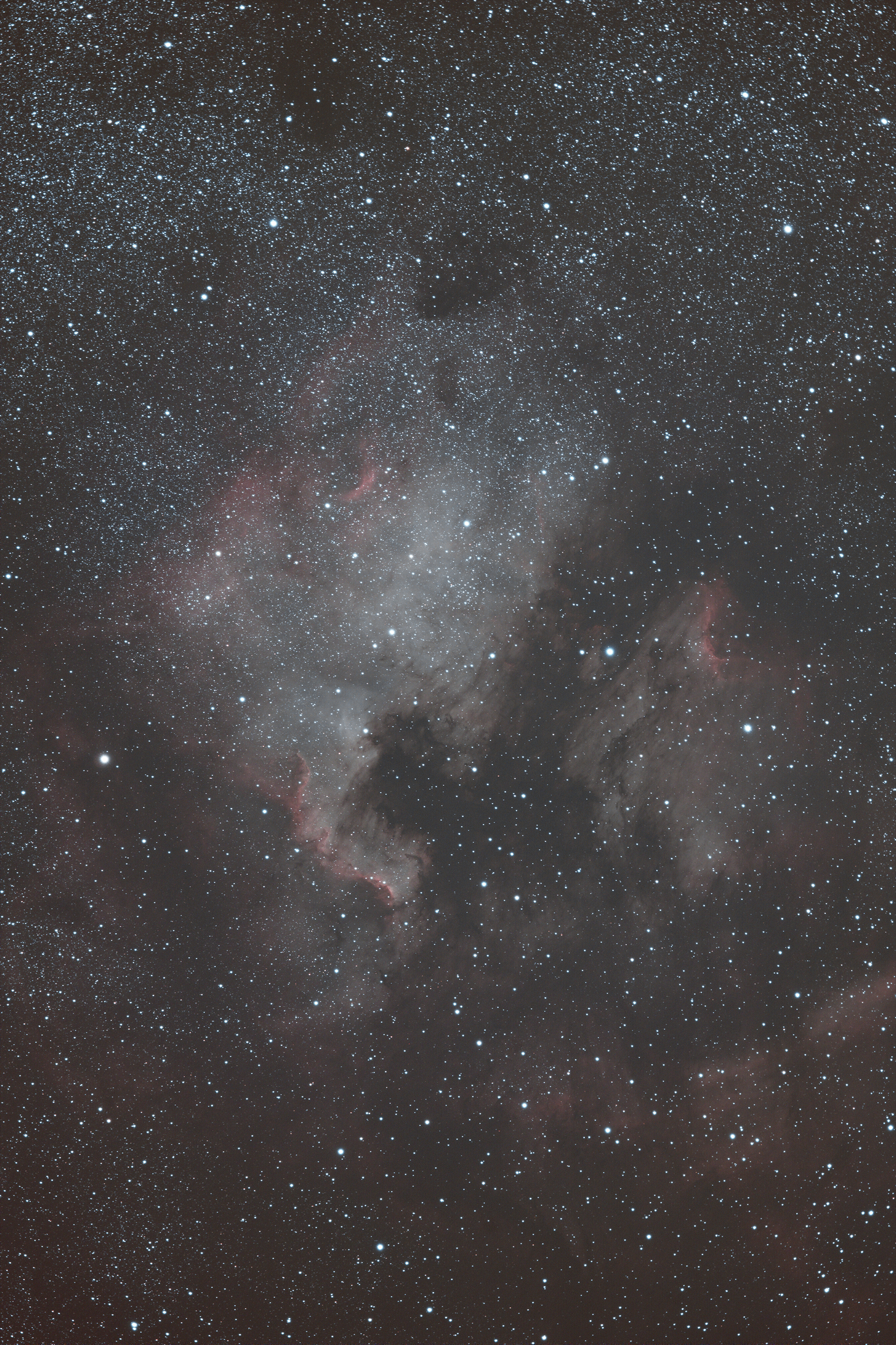

This difference in field of view for these cameras will be useful in deciding which camera to use for what target. I think for large targets like North American Nebula, the wide field with Nikon Z6 is desirable to cover it along with the neighboring Pelican nebula but, at the same time, the small field of view can be useful in getting more details in the more interesting part (Cygnus wall) of the North American nebula. It is good to have these choices. I can see making use of both these fields of view for imaging in coming months and years to come. Buying another camera or another telescope is always possible and it will bring in new calculations and new possibilities.
New camera and computer
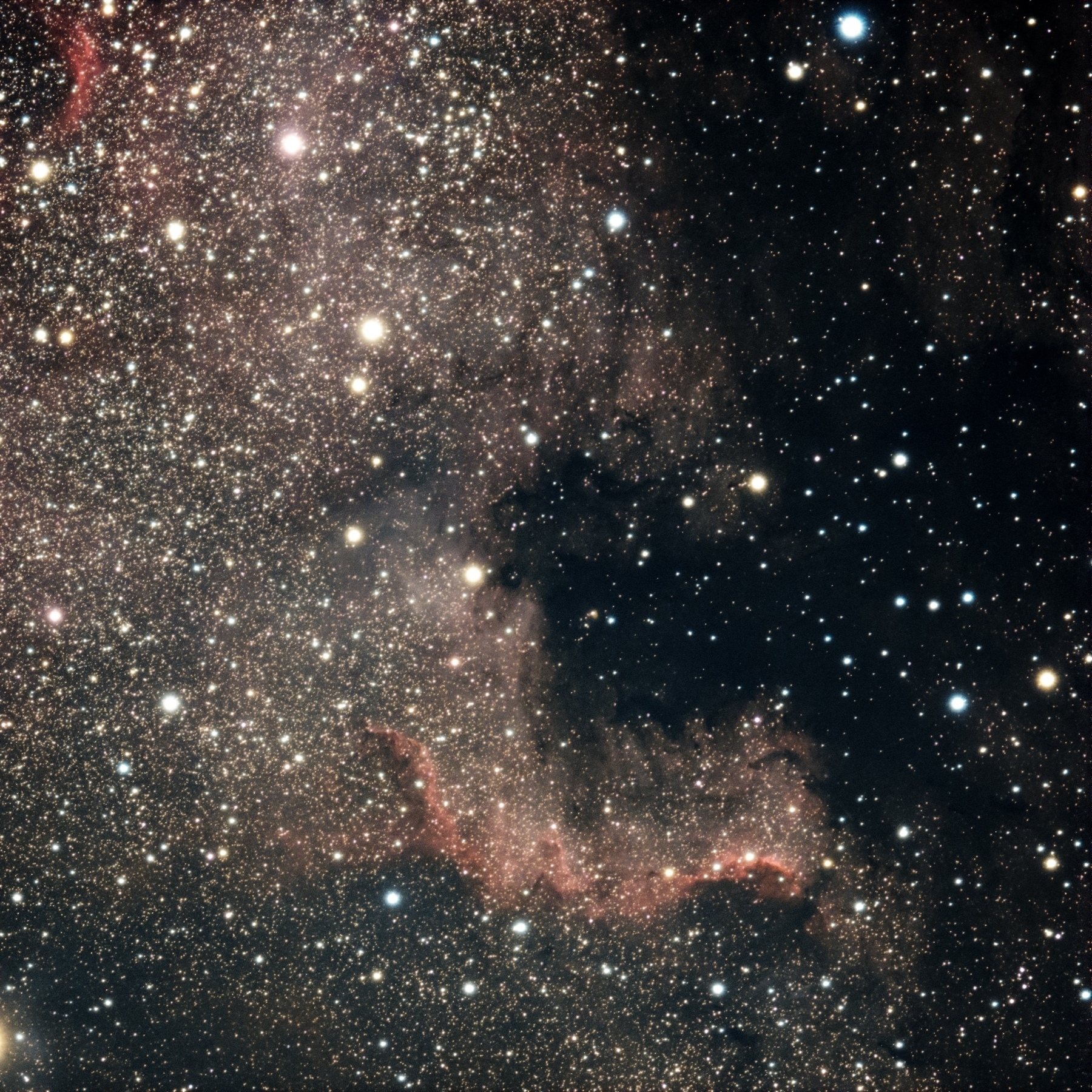
Last night was the first time using my new astrophotography setup with a dedicated astronomy camera ZWO ASI533MC-PRO and the small computer ASI AIRPlus that controls the whole setup. It was quick and easy to get polar aligned and focused using the app. Took me a little while to get auto-guiding to work because my guide-scope was not in focus and I was just chasing ghosts. Half the images were collected without auto guiding. As the first object with new setup, I chose North American nebula (NGC7000). It is one of my favorite objects. With the cropped sensor of this camera, it will take some time getting used to framing, especially for large objects like this one. About 2 hours of total exposure (3 min x 41 subs) worked quite well. Like how the Cygnus wall turned out in this one.

M51 - reprocessed
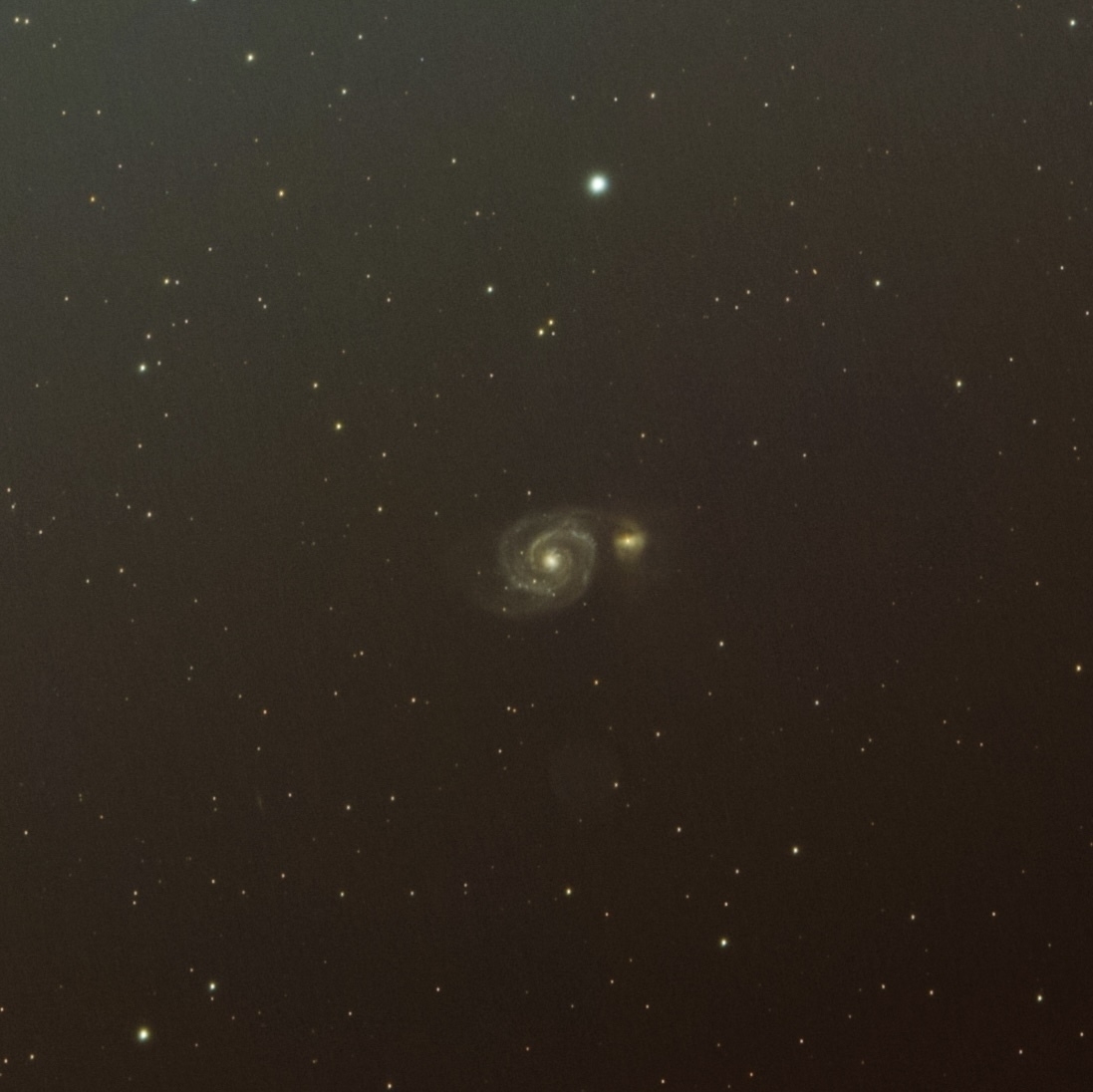
Back on April 21st, I captured an image of the Whirlpool galaxy (M51) and processed it without any calibration frames as I didn’t have flat frames that night. I took some flat frames on the following morning but forgot about it. Finally got around to use a full set of calibration frames (dark, flat and bias) and the result is quite remarkable. Just needed that extra hands-on validation to keep using calibration frames in my workflow.
Startrails photo
One of my photos was published in the newsletter for a local land preservation trust, Lyme Land Trust. I have plenty of publications for my professional work but this recognition of my hobby makes me feel very happy.
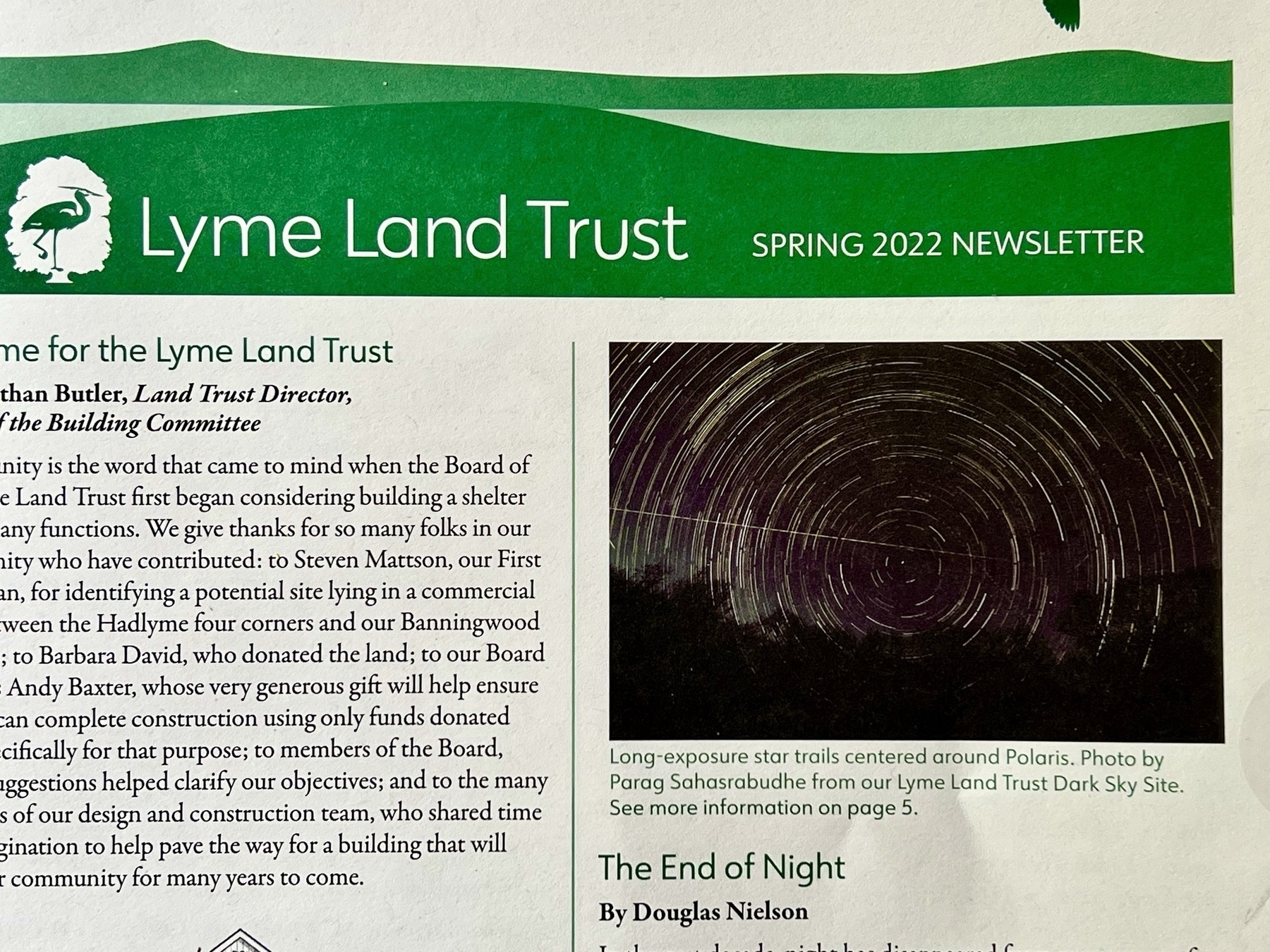
Here is the original photo that was captured back in the end of March 2022. It is a stack of 30 second exposures totaling to about 2 hours.
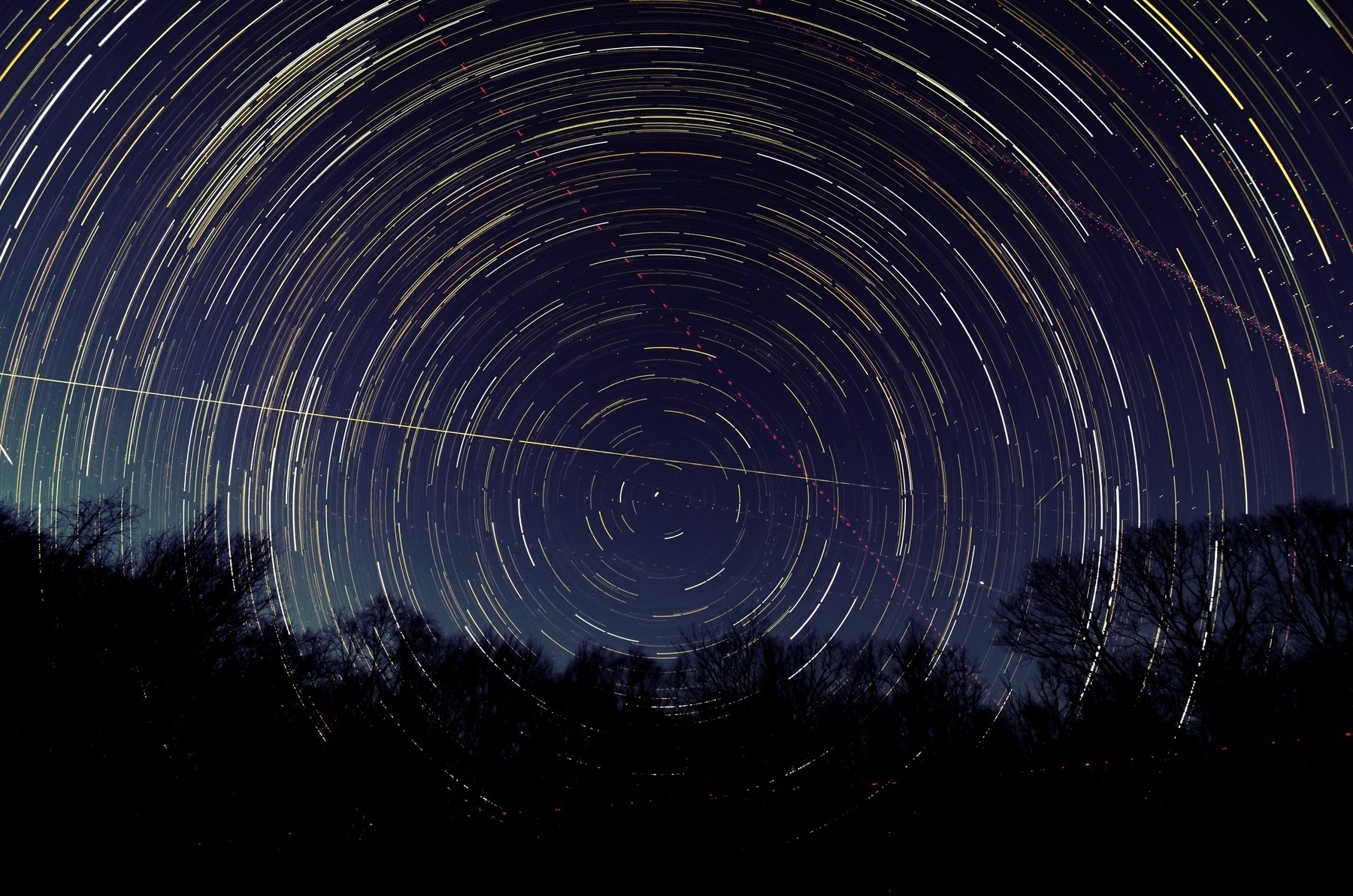
Pinwheel galaxy
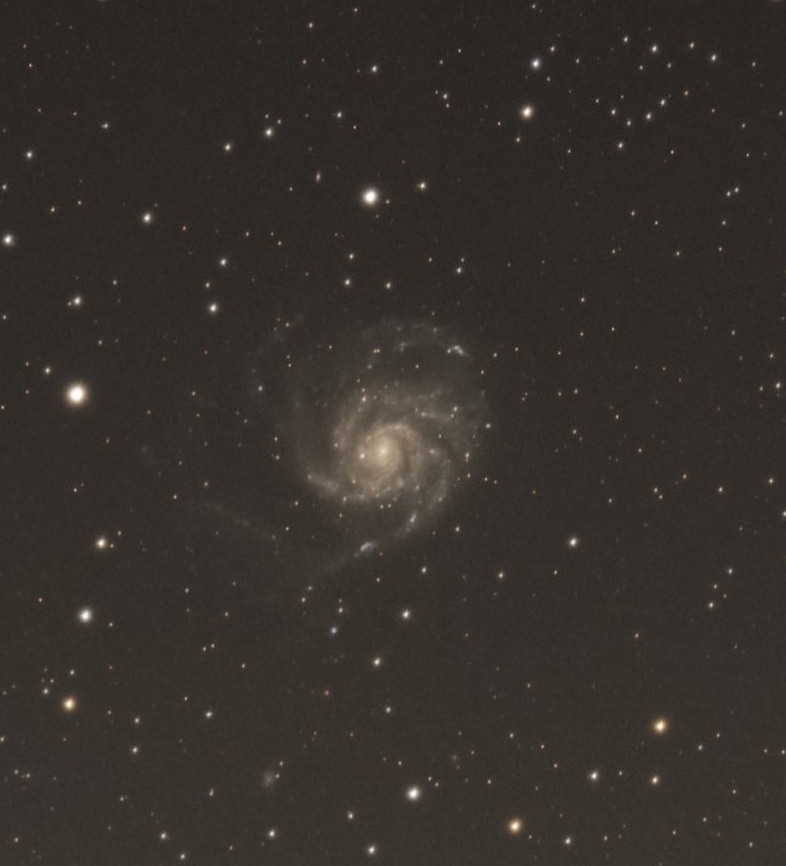
The Pinwheel galaxy aka M101 is located in Ursa Major. This face on spiral galaxy is about 21 million light years away. It is a bit larger than Milky Way and has around a trillion stars.
This image is a stack of 2 minute subs totaling ~3 hrs of exposure.
Taken with William Optics ZenithStar 61 - Nikon Z6; processed with Siril and Photoshop.
M51 - The Whirlpool galaxy
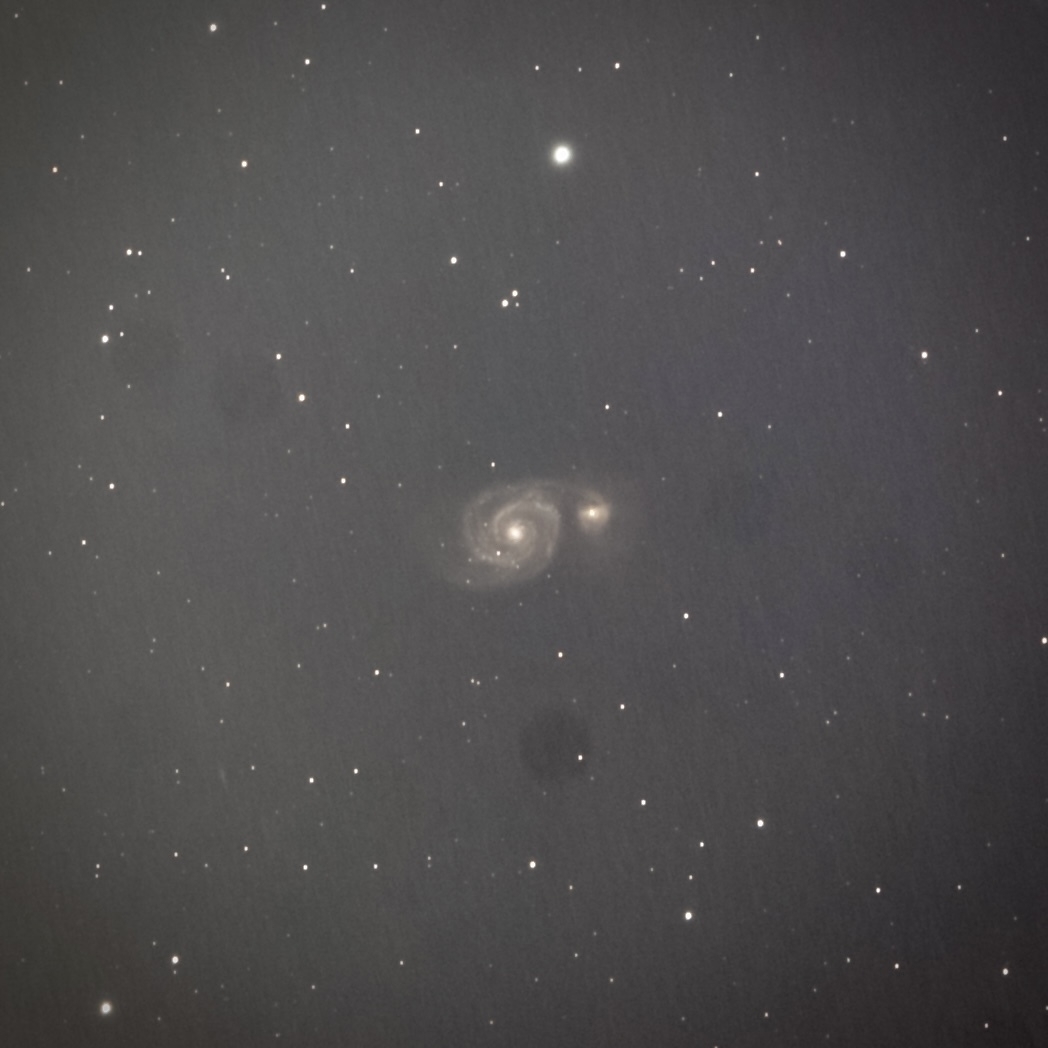
I find M51 as one of the most striking images of a galaxy. M51 aka the Whirlpool galaxy along with its companion dwarf galaxy NGC5195 can be seen interacting with each other. This pair of galaxies is located in the constellation of Canes Venatici and is located about 28 million light years away. It is about half the size of our Milky Way and contains only about 10% of the mass. This top-down view allows us to take in the expanse of the spiral arms of this galaxy.
This photo was taken with a full moon very close to the target and it was very difficult to eliminate the bright background due to moonlight. It is a stack of 59 two-minute exposures taken with a Nikon Z6 attached to William Optics ZenithStar 61. The images were processed using SIRIL and Photoshop.
Comet Hale-Bopp
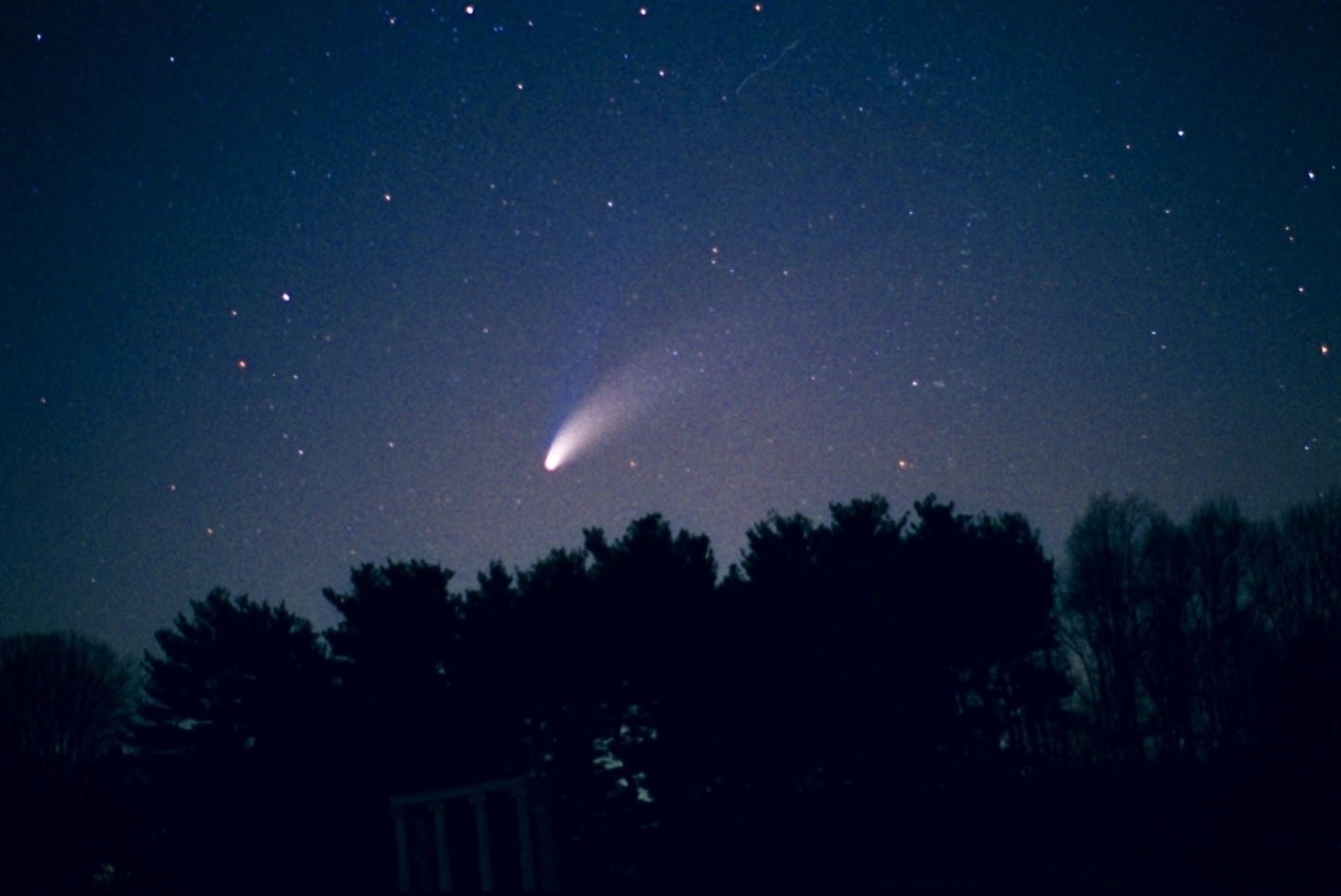
Almost 25 years to the day when I took this photo of comet Hale-Bopp at Princeton Battlefield park in Princeton, NJ. This was taken with a Pentax K1000 - 50mm lens and Kodak Gold 100 film.
I remember hiking in the Grand Canyon in following week and the comet looked so much brighter in dark skies out there.
Markarian's chain
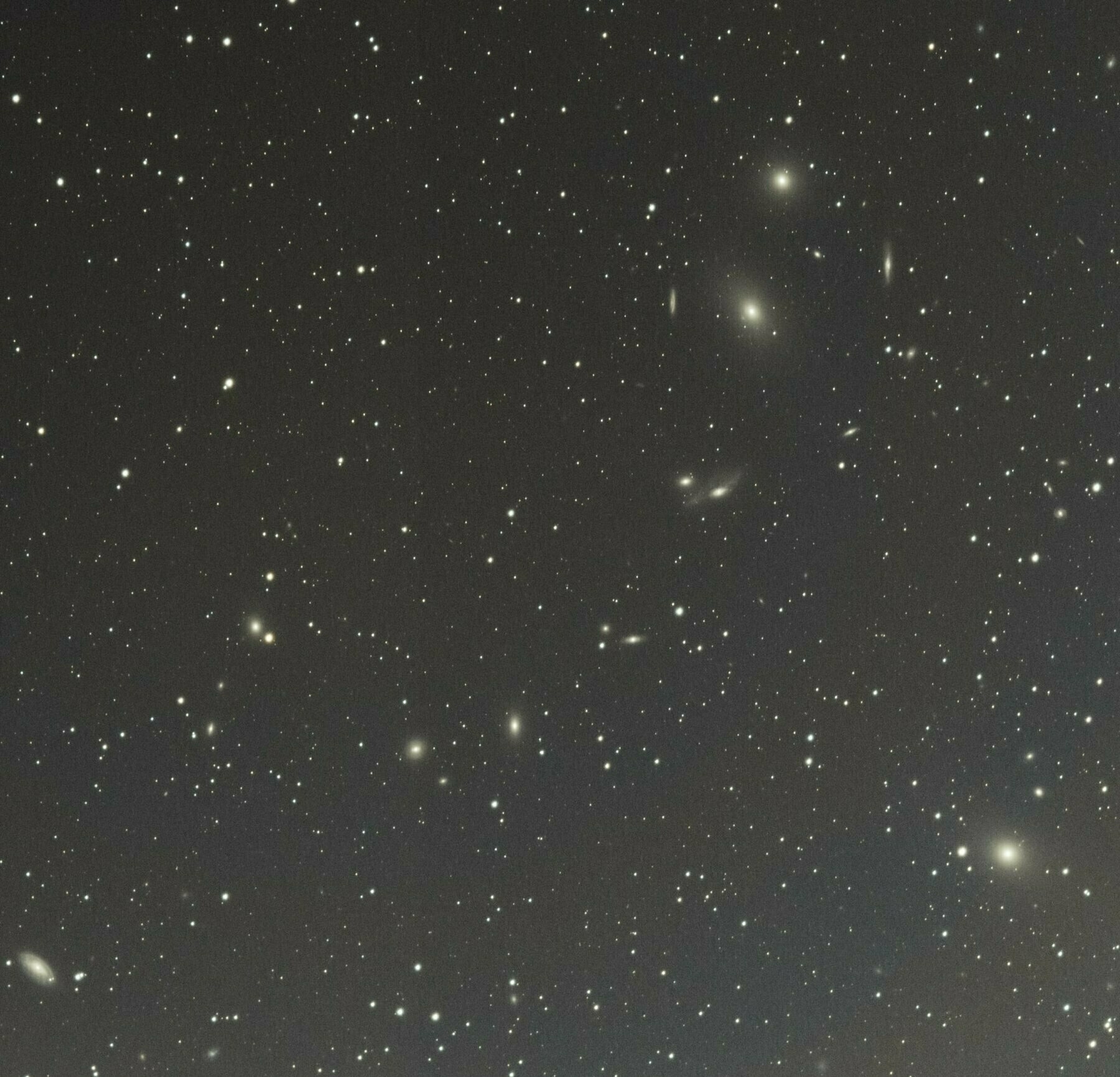
This is my first try at capturing Markarian’s chain in Virgo. This is a stretch of galaxies that are part of the Virgo cluster. I have seen images of this part of the sky and marveled at the rich field of galaxies. Finally, I was able to get the same view with my own equipment. This is only 1 hour of total exposure and it blows my mind. So many galaxies in one view - billions of stars.
The full frame of the cropped photo above, shows many more galaxies from edge-to-edge of the picture. I could mark about 50 galaxies but there are many more in this field of view. The whole cluster is about 50-70 million light years away.

There are some galaxies here that have some interesting facts and features. Those are annotated in this image with the description below.
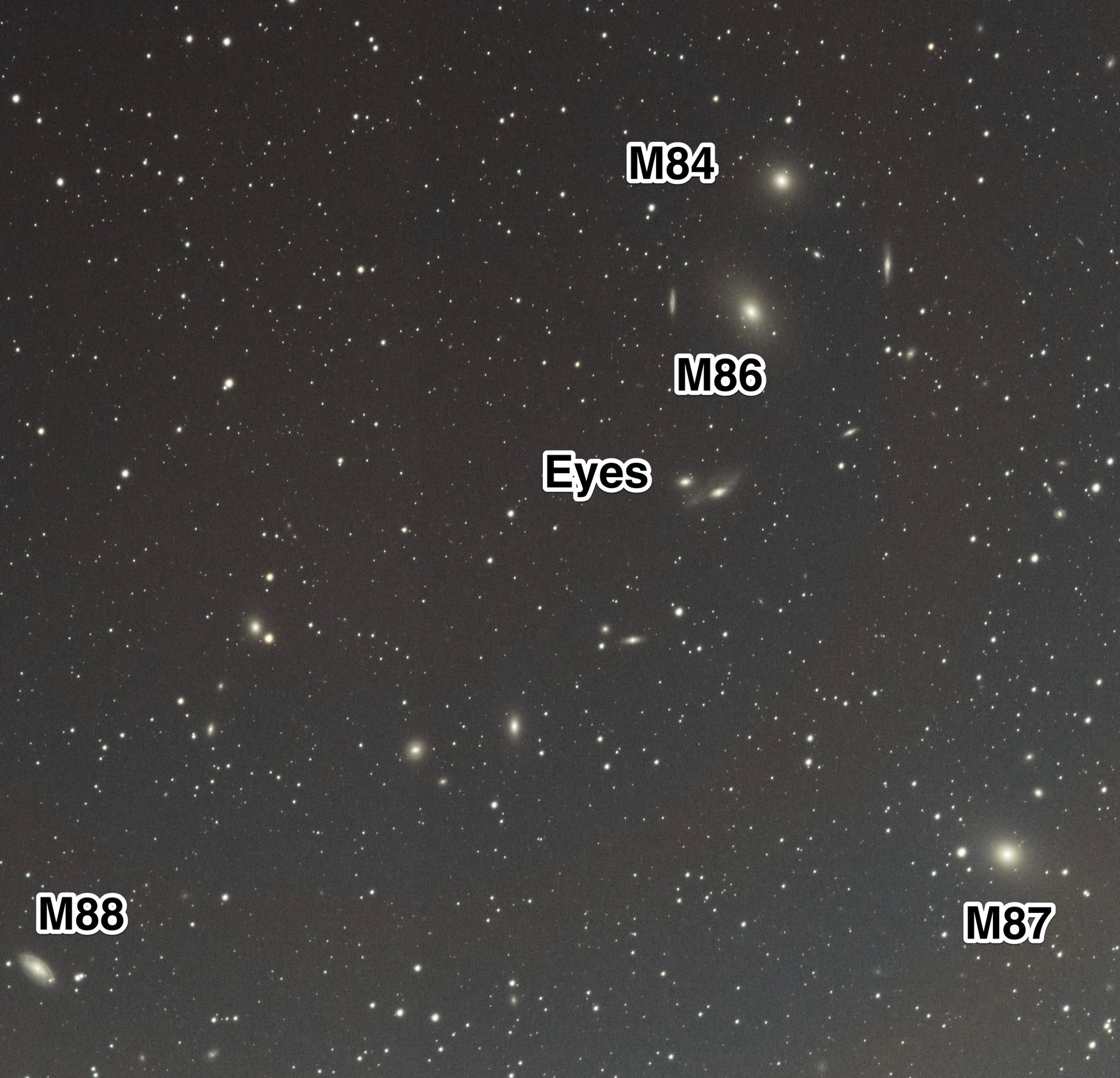
M86, an elliptical galaxy has a large blue shift indicating that it is moving towards us at 280km/s. Actually it is getting pulled towards the core of Virgo cluster but relatively towards us.
M87 aka Virgo A is a giant elliptical galaxy which is one of the strongest known radio source. It is larger than our home galaxy, Milky Way and contains about 12000 star clusters which is a lot more compared to ~150-200 in Milky Way. It also has a supermassive black hole at the center that amounts to 2-3 billion solar masses.
M88 is a spiral galaxy. It looks like miniature Andromeda galaxy due to its orientation. It is moving away from us at 2000 km/s.
M84 is also an elliptical galaxy that is one of the brightest in the Virgo cluster. Three supernovae have been observed in this galaxy in 1957, 1980, and 1991. This is unusual for an elliptical galaxy.
The Eyes galaxies appear at about 100,000 light years from each other but they were probably as close as 16,000 light years and it appears that the galaxy on the right has stripped some material from the galaxy on the left.
I have been frustrated with all the cloudy skies over the last couple of months and not getting enough dark sky time. That has made me an impatient observer. I have to get out of this impatient phase where I jump from target to target & spend more time on one target to get better images.
Galaxies in Leo
Spring is officially galaxy season. Here are two groups of galaxies from the constellation Leo captured on two separate nights. In these images you can see billions of stars as each galaxy contains hundreds of millions to billions of stars.
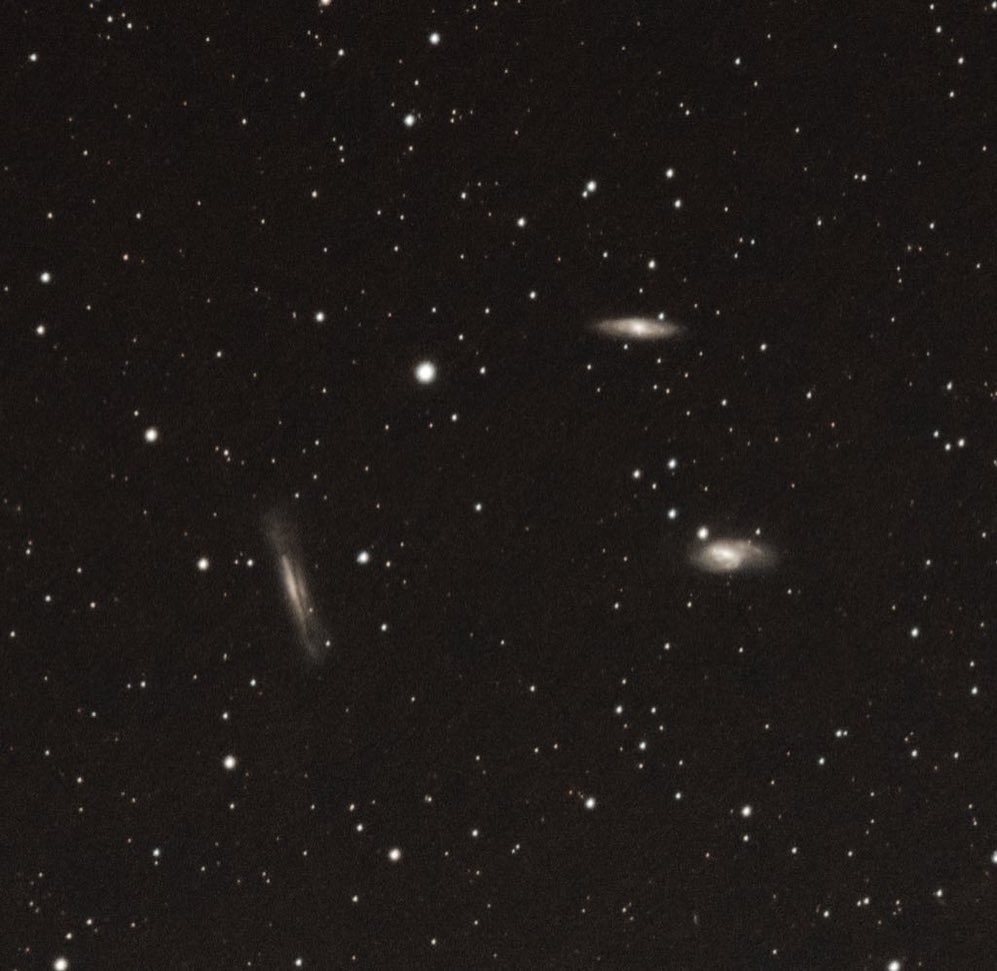
1: The famous Leo triplet. (L to R) NGC3628 aka hamburger galaxy, M65 and M66
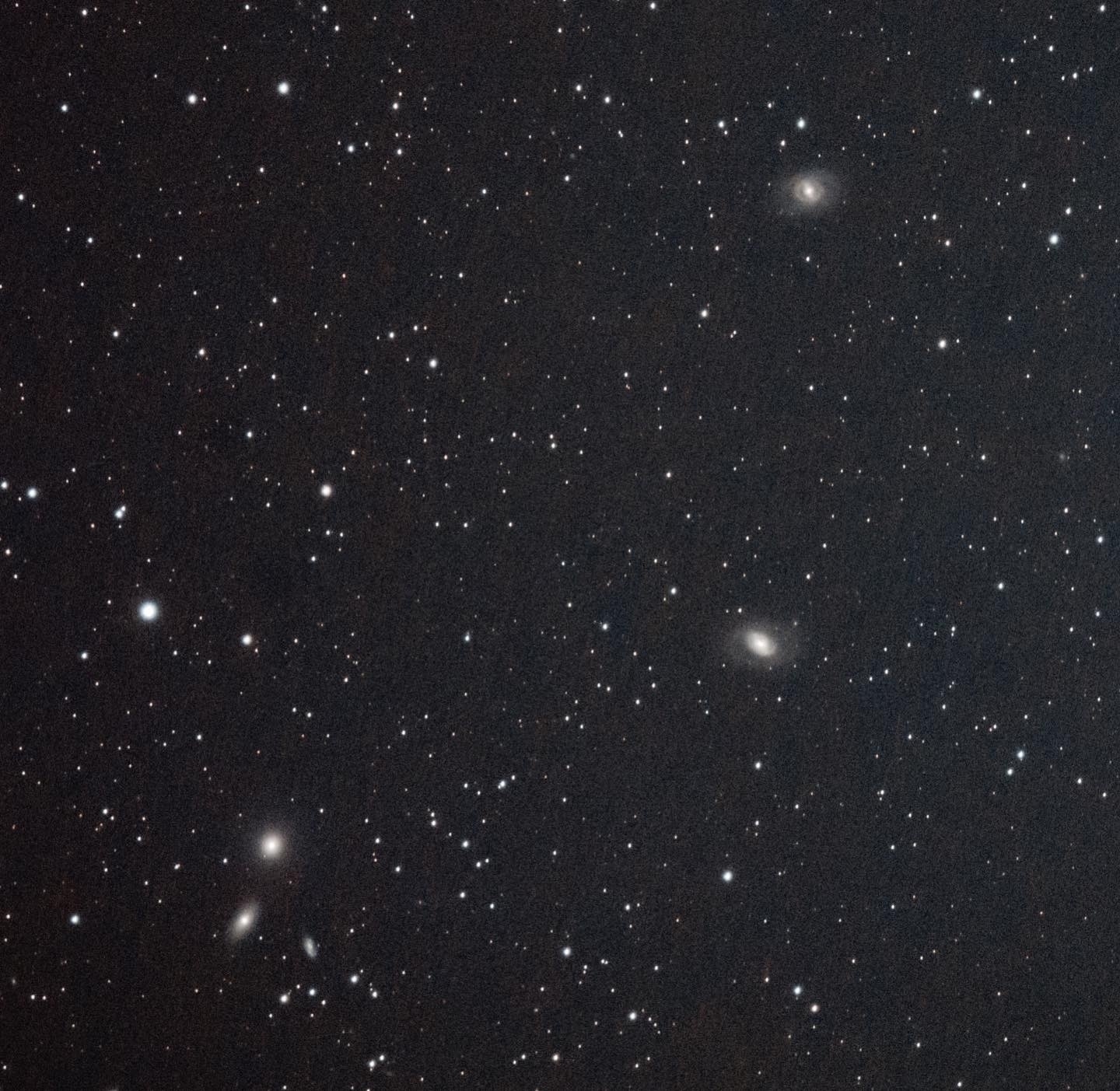

2: M95 and M96 on the right of center, M105, NGC3384 and NGC3389 bunched up towards the left bottom corner. NGC3389 is probably the farthest object that I have intentionally captured in a photo - at about 70 million light years away. Only 5 galaxies are annotated here but, there are many faint ones in this view as well.
Both images are short exposures - only about an hour each. Clouds foiled my plans on both nights when I was imaging these.
WO ZS61 - Nikon Z6 - Siril - PS
Rosette nebula again
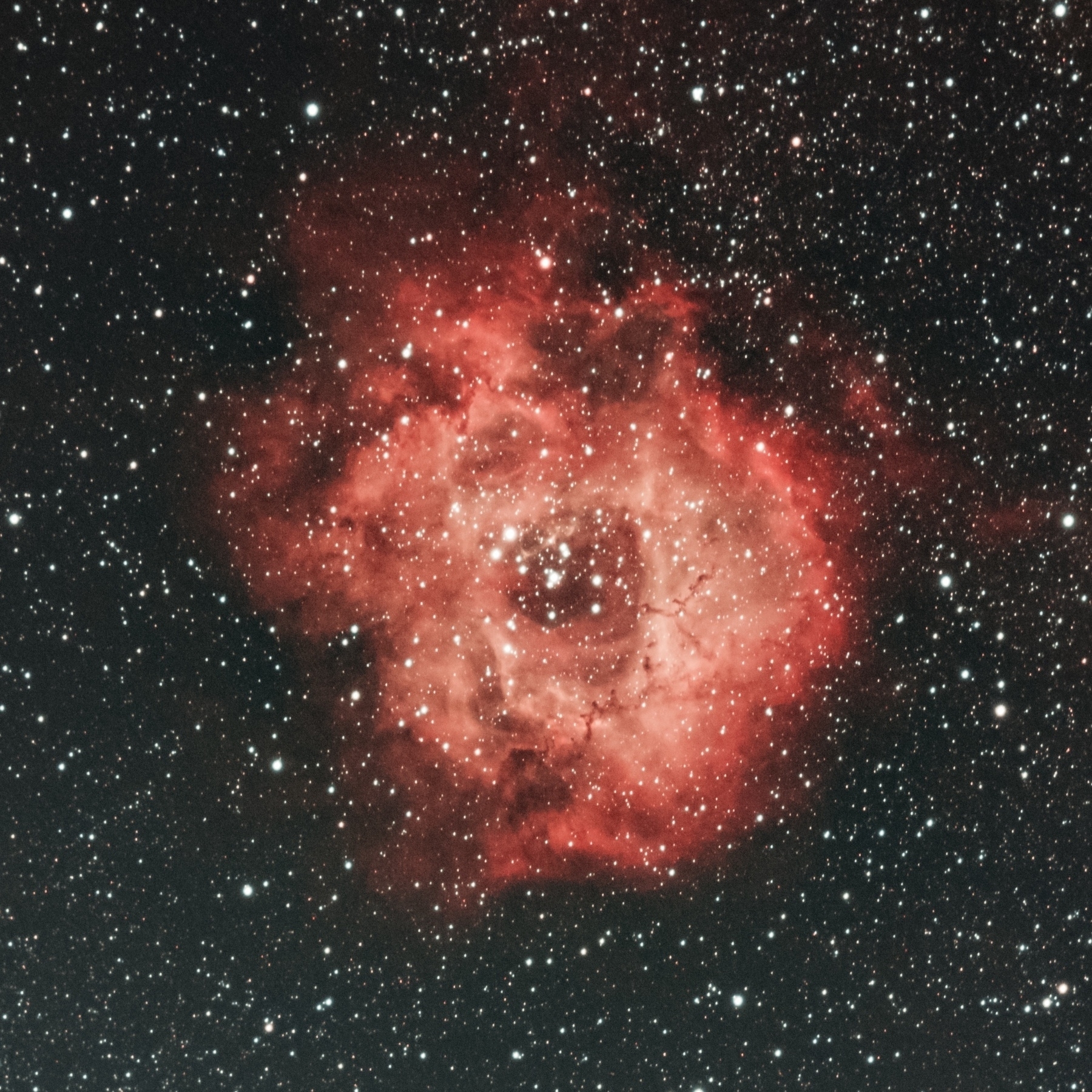
Another attempt at capturing Rosette nebula. This time I was able to get about 2 hrs of exposure instead of 20 mins for the first try a few days ago. There was also enough time to shoot calibration frames - darks, biases and flats. It is so easy to use these calibration frames in Siril. This allowed for better resolution making the strands and patches of dark nebulosity clearer. I still have to learn some star reduction techniques.
Rosette nebula
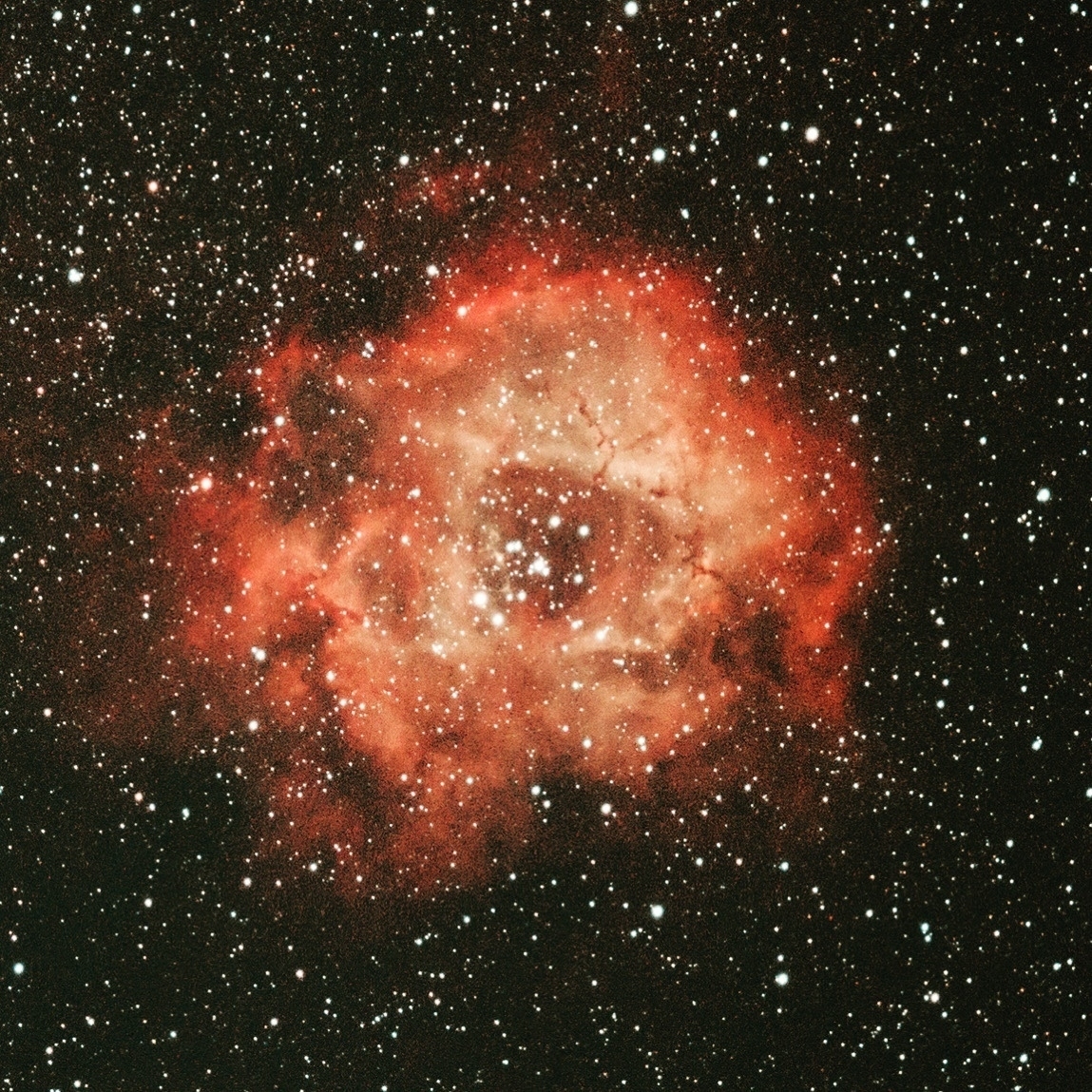
I so wanted to capture this for a long time. Last night I set up everything but clouds rolled in in about 20 minutes. That is why it is so noisy. Needs more time. Also, it was such a short exposure, I didn’t bother with calibration frames.
This nebula is about 5200 light years away and is huge. The central hole with that star cluster is about 30 light years across.
WO ZS61 - Nikon Z6 - LeNhance - 14 x 90 sec
